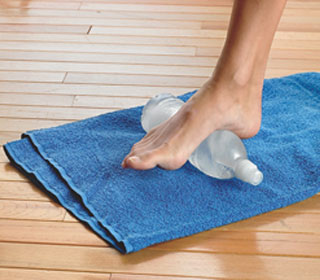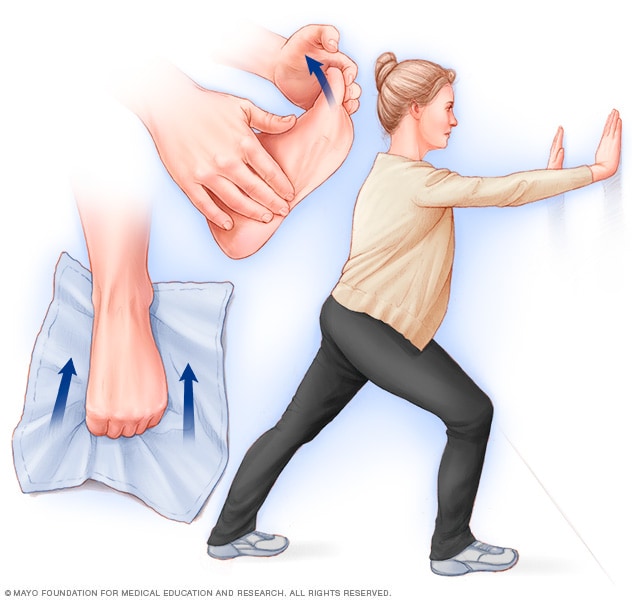
Out of all the sports and activities you could choose to do, running is one that’s relatively safe, but can still lead to issues like plantar fasciitis. Do you have these plantar fasciitis symptoms?
While is not not a physical contact sport like, say, football, where you’re constantly beating up on other athletes and purposely trying to run each other into the ground.
It’s also not so singular and solitary like golf, for example, where you only engage very specific parts of your body in very clear-cut ways. Instead, running is somewhere in the middle.
Do you have these Plantar Facciitis Symptoms?
What’s tricky about running is that despite its relative safety, the fact of the matter is that a lot of runners do get injured every single year, and Plantar Fasciitis symptoms are some of the leading issues runners deal with.
Some of the injuries, like plantar fasciitis can take out runners just temporarily, for a few days or weeks at a time, but for some of the more nefarious injuries, they can be season-ending or even career-ending, if it’s bad enough.
One of the arguably most common running-related injuries is plantar fasciitis. It’s an overuse type of injury that affects the bottom of your foot, the plantar fascia, to be specific.
People who experience Plantar Fasciitis symptoms often know it when they have it because the first steps you take when you get out of bed in the morning are often super painful and uncomfortable. Literally you feel intense pain the very first time your feet hit the ground and you begin to walk.
In my post today, I’ll help provide some guidelines to help you manage your plantar fasciitis and ultimately help you beat it. If caught and managed early and well, it needn’t be a season-ending or career-ending malady; just like with a lot of little injuries and niggles, though, you absolutely have to stay on top of it so you can rectify it — and fast.
If you’re dealing with plantar fasciitis currently, read on for some guidelines to help you manage it and beat it. They include the following:
First things first: get a professional opinion.

In the information age of Google, runners often tend to self-diagnose foot problems. Most of us aren’t medical professionals, so a lot of the time, we self-diagnose incorrectly.
If you suspect you have plantar fasciitis symptoms (PF), or simply if something feels “off” in your feet, go talk to a medical professional, particularly a sports medicine physician, a physical therapist, or a physio to get the correct diagnosis.
If you have that malady, chances are high that your practitioner will give you some plantar fasciitis-specific exercises to help you beat it, and they may also give you some suggestions as to whether it’d be worthwhile for you to wear certain braces or socks each night, too.
Plantar Fasciitis Treatment: Roll, baby, roll.
If you suspect that you have plantar fasciitis, one of the best and easiest things you can do to bring relief is to roll out the fascia in your feet routinely. If you have a foam roller, a stick, or an addaday, you could use any of those devices to really get into the fascia and lengthen it out.
If you don’t have those devices, simply taking a 20 oz plastic soda bottle, filling it with water, and then freezing it can do the trick. Many people report that rolling their feet out with a cold implement makes the rolling and lengthening feel even better, and some people will even use canned goods on their feet if they’re resource-crunched.
Pay attention to your other musculature, particularly your calves and glutes.
We all know that our body is a complicated series of muscles, tendons, ligaments, and bones that are all connected to each other. That said, even if you’re feeling plantar fascia pain in your feet, it’s highly likely that there’s something else going on elsewhere, too.
Perhaps your calves are preternaturally tight. Maybe your glutes aren’t firing as they should be when you’re running. Your hip flexors could also be the blame. Everything pulls on everything else, so it’s important to acknowledge that just because your pain manifests in one particular area doesn’t guarantee that that spot is the actual source of the pain.
It’s highly likely that the pain is originating somewhere else and is trickling down. When you spend time rolling out your feet each day, be sure to take the time to also roll out your hips, glutes, and calves as well because more likely than not, they’re also implicated in your plantar fasciitis.
Plantar Fasciitis Strengthen Exercises
As I alluded to earlier, because it’s highly likely that your fasciitis isn’t beginning with your actual feet, it’d behoove you to be sure to do some strengthening work on other parts of your body.
Sure, you should absolutely do some foot-strengthening exercises, like working to pick up small toys with your feet, but you should also plan to devote some time each day to hip mobility work using an exercise band and/or to calf work, in the form of calf raises or calf stretches.
A physical therapist or physio will be able to give you specific exercises to follow and do each day. A little really can go a long way and in the case of plantar fasciitis symptoms, help to actually minimize the muscle imbalances that may have contributed to your fasciitis in the first place.
(Em)brace.
Finally, if your pain isn’t abating, your practitioner may also recommend that you sleep wearing a plantar fasciitis-specific brace or sock. Though the models may differ slightly, typically the thinking is that each brace or sock will inhibit your foot from flexing all night long, which will then minimize the tightness you feel (which hurts when you walk for the first time each day) in your feet.
There are lots of different models and options available online; you just have to spend the time to research the ones your practitioner recommends.
Conclusion
With a little time and patience, as well as some good guidance from a qualified medical professional, you’ll be nipping your plantar fasciitis symptoms in the bud. It’s an annoying malady for sure but fortunately one that is (typically) not as nefarious and season- or career-ending as other maladies out there.
Best wishes on your running journey! May your miles be plenty and injury-free.
AUTHOR’S BIO:
JANE GRATES is Runner and a fitness guru. Making at the sweet spot between beauty and sustainability to create strong, lasting and remarkable design.
Ken Weiss is a health blogger who is passionate about natural and holistic cures for men’s health issues. He is the founder of menshealthcures.com


You got a really useful blog I have been here reading for about half an hour. I am a newbie and your post is valuable for me.
Thanks for taking the time to discuss that, I really feel strongly about it and love learning more on that topic. If achievable, as you gain competence, would you mind updating your blog with more information? It is highly helpful for me.
Great info on plantar fasciitis. Thanks for sharing.
I take in some new stuff from it as well, a debt of gratitude is in order for sharing your data.